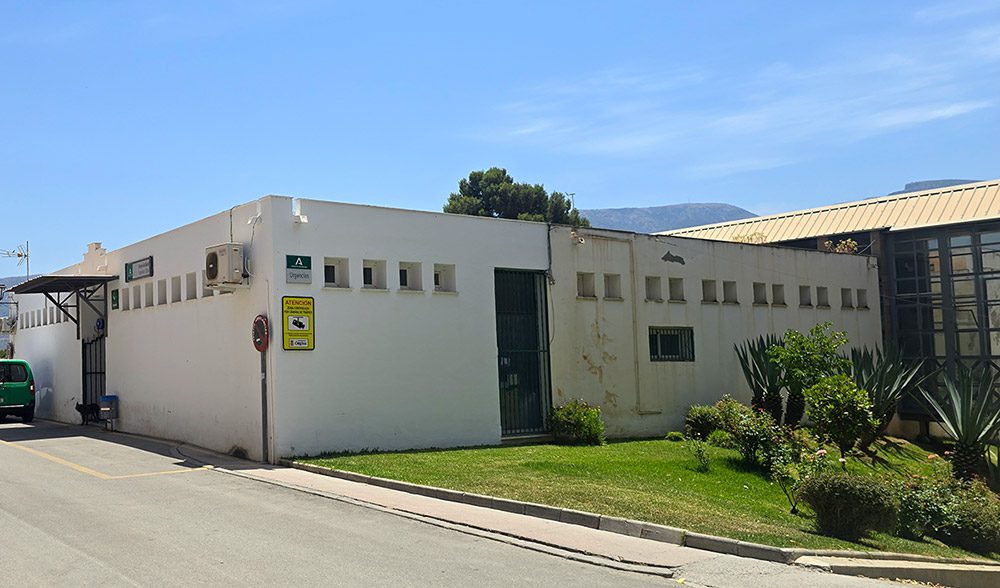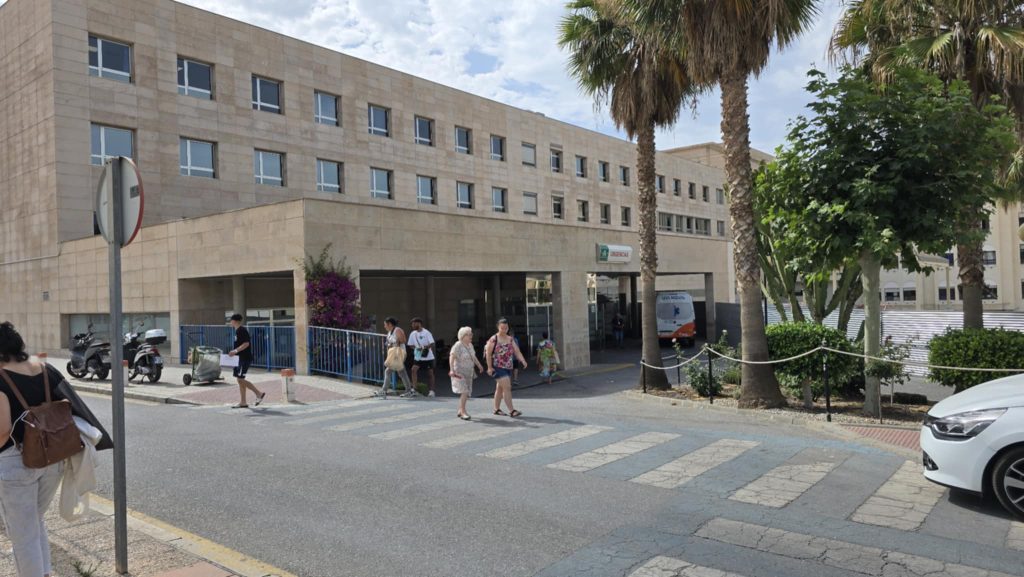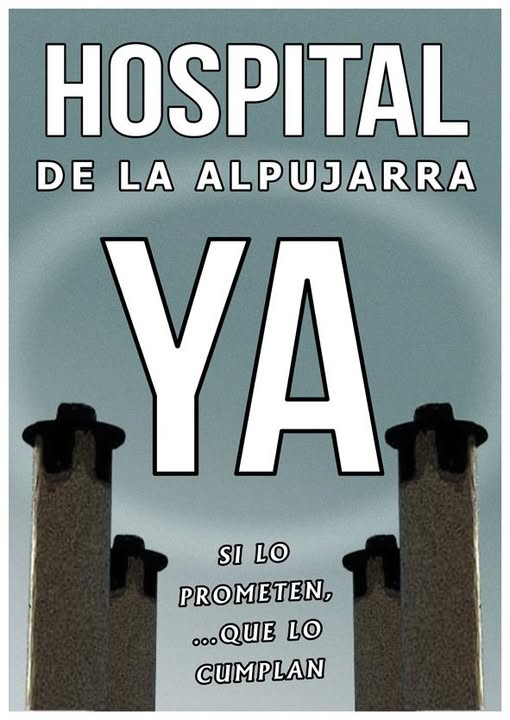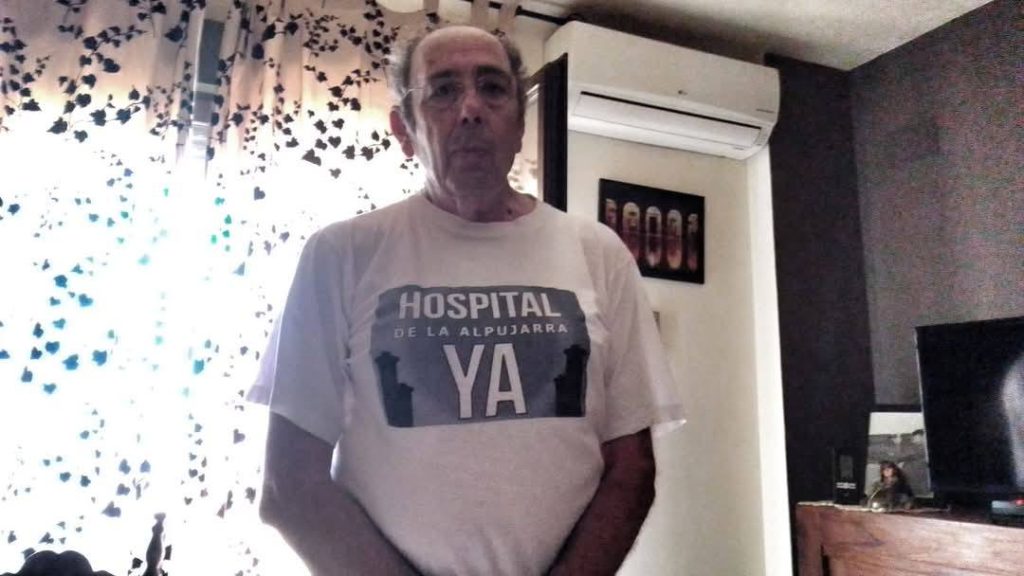THE long-awaited “Hospital for La Alpujarra” – a project requiring input by the Junta de Andalucia – seems to be lacking oxygen for now. With summer upon us and tourists appearing, concerns about the capacity of ‘Urgencias’ services in the province are rising
Although many people are campaigning for a dedicated hospital for La Alpujarra, plans are allegedly afoot to improve medical facilities in Málaga, with a new mini-hospital. To exacerbate the situation, Motril Santa Ana Hospital is rumoured to be closing – or running limited services from – its ‘Urgencias’ department (the Spanish equivalent of A&E in the UK) for the summer months. However, the Junta de Andalucia is strongly denies this idea, saying it is scaremongering and falsehoods.
Recently, Málaga healthcare has experienced issues with collapses” reported in Urgencias services. The summer peak increases the population on the ‘costa’ – with an influx of tourists – and strains ‘urgencias’ departments. In short, there can be more demand than supply in busy zones.

What about La Alpujarra?
It is becoming a perfect storm for residents of La Alpujarra, who are further from a hospital than is comfortable – especially those living in villages located in La Alpujarra Alta (High Alpujarra).
The healthcare situation for mountain-dwellers has always been precarious. OK, it is preferable to the UK, where six-week waits for GP appointments, ambulances being delayed, and 72hrs in A&E are not uncommon.
However, for those based up rural tracks, medical emergencies are tricky. For starters, the ambulance is unlikely to negotiate forestry trails. Injured people may need someone to drive them to Urgencias – and ther person may have no medical training. (This happened to the reporter, when she broke eight bones at 1,800m, and was taken to Urgencias in a bumpy pickup truck, preceding a five-day hospital stay). With Órgiva Urgencias providing limited services, and Motril under strain, where does that leave residents of the Alpujarra of Granada?
Well… Granada Urgencias is a feasible option, but it is hardly on the doorstep.
In a survey on a local forum, with 127 votes, 38% of respondents believed healthcare is “inadequate because it is too far to Motril or Granada hospitals”, 10% said it is difficult to obtain an ambulance, and only 6% were happy with the existing provisioning/facilities.

Citizen protests – Hospital for La Alpujarra
Headed by Orgiva resident, Carlos Miralles, the ‘Citizen Platform for the Hospital of La Alpujarra‘ was created nine years ago to demand that the Andalusian Regional Government fulfil its promise to construct a hospital for the rural area. For those living in La Alpujarra it is – at best – a 30min drive to Motril Hospital and 45mins to Granada. These are critical minutes if somebody is in a serious state. Some residents face hour-plus transfers if they live in, say, Trevélez.
Miralles says; “As a platform, we have demonstrated in Órgiva, Lanjarón, Torvizcón, Pampaneira, Capileira, Granada, and Seville. We have been to the Andalusian Parliament with a question about the hospital, which has not been adequately answered. The Andalusian Ombudsman has received numerous letters on the subject, and we have also met him. The press, radio, and television have covered the platform’s activities, with interviews on Onda Cero, Ideal, and Canal Sur.”


He adds: “Two years ago, the Órgiva City Council acquired a plot of land at the intersection of the A-348 highway with the mountain road. This plot has a large sign stating that an ‘”‘expanded High Resolution Centre'” is to be built. Since then, nothing has been done. This centre was designed for 25,000 residents of the Alpujarra region and 25 villages. The new Health Minister said a year ago that ‘no’, it would be for 15,000 users and that, since there are so ‘f’ew’ patients, it’s not appropriate to build a regional hospital.”
“This new health centre would have no ‘beds’ (so no admissions), although surgery and some other specialties would be considered. Some diagnostic tests would be added, like CT scans.”
He concludes: “The promised Hospital for La Alpujarra is not planned to be built. If anything, it would be like a health centre with a few more tests and located far from town, which would cause inconveniences for many patients. The Regional Government of Andalusia promised to start construction last year and finish by 2025. But that promise will not be kept. We only have an empty lot.”
What do our local politial parties say?
María Morillas, secretary general of political party, PSOE-Órgiva, commented: “PSOE-Órgiva has been campaigning for a hospital for La Alpujarra for years. But that doesn’t mean we have to put up with the dilapidated state of our existing health centre in the meantime. So we put forward a motion to the recent full council meeting. This demanded from the Junta de Andalucía a technical evaluation of the centre, a report on investment in our facilities over the last five years, and a budget allocation to carry out the required repairs. Although the motion was passed, disgracefully, the mayor, PP and UCIN all voted against it.”
Angel Garcia, present of the local PP party, says: “The hospital is an ongoing project. The land is at the disposal of the Regional Government of Andalusia. This project, like the courthouse, takes time, but the government’s commitment is firm, and we hope it will be approved during this term and become a reality in the next. The Regional Government responded when we had the bridge emergency and the need for the new courthouse, and we have complete confidence that it will continue to support the Alpujarras and Órgiva.”
Granada may be the best summer Urgencias option
Although a Urgencias nurse told Soth of Granada, off-record, that Motril Santa Ana will almost certainly continue with Urgencias services during summer, a petition has been established on Change.org against the prospect of Motril Santa Ana Hospital’s Urgencias being closed. It currently has over 4,500 signatures.
Meanwhile, almost everyone involved in healthcare to whom the reporter has spoken recommends the PTS – Hospital Universitario San Cecilio in Granada, saying (in general) that it has “better Urgencias facilities than Motril”. However, the time taken to get there remains a valid concern.
Anyone with a medical emergency must phone 112 as soon as possible. We could also all consider a first aid course, if we live remotely.

